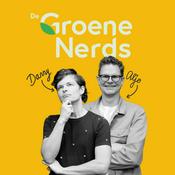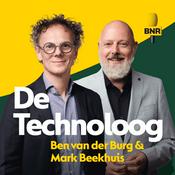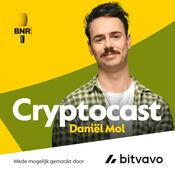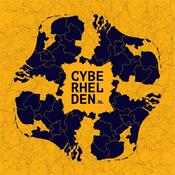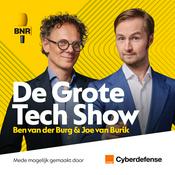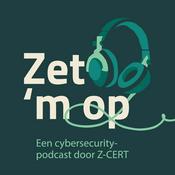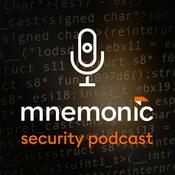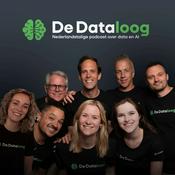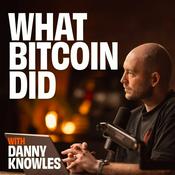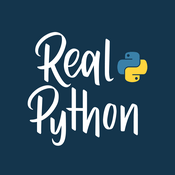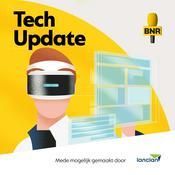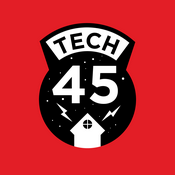48 afleveringen

Teaching the Next Generation: Software Supply Chain Security in Academia with Justin Cappos
16-12-2025 | 22 Min.
On this episode of "What's in the SoSS," Yesenia Yser sits down with Justin Cappos, NYU professor and self-described "OG software supply chain guy" who's been working in this space since 2002. Justin reveals why most universities fail to teach fundamental security practices—from MFA to code signing—and how his groundbreaking software supply chain security course is creating some of the top 500 most qualified professionals in the world. We discuss the challenges of keeping curriculum current in a rapidly evolving field, the "throw them in the deep end" approach to teaching open source collaboration, and Justin's vision for transforming security education across institutions nationwide through the Linux Foundation's Academic Computing Acceleration Program.Episode links:Justin Cappos NYU Professor PageNYU Tandon School of EngineeringLinux Foundation Academic Computing AccreditationOpenSSF EducationCNCF Tag SecurityGet involved with the OpenSSFSubscribe to the OpenSSF newsletterFollow the OpenSSF on LinkedInChapters00:24 - Introduction & Guest Welcome01:49 - The SolarWinds Effect02:01 - Aligning with Linux Foundation's Academic Program04:06 - Critical Gaps in Traditional CS Education06:35 - Teaching Open Source Culture10:45 - Career Impact & Student Success13:52 - Adapting to AI & Rapid Industry Change16:30 - Vision for the Next 5-10 Years19:52 - Rapid Fire Round20:52 - Final Advice & Closing

Securing the Future: AI, Open Source, and Collaboration with Jay White (Microsoft)
02-12-2025 | 25 Min.
Jay White, a leader in the open source ecosystem at Microsoft, discusses his journey into open source, focusing on AI and machine learning. He highlights his role in the Azure office of the CTO, working on open source, security, and AI standards. White emphasizes the importance of model signing and transparency in AI development, mentioning ongoing work in the OpenSSF and Coalition for Secure AI (CoSAI). He encourages community involvement, noting the need for standardization in AI supply chain security and the nuanced challenges of cultural representation in AI models. White also shares his passion for community building and the importance of continuous learning in AI and machine learning.Episode links:Jautau “Jay” White LinkedIn pageOpenSSF AI/ML Working GroupCoalition for Secure AI (CoSAI)Get involved with the OpenSSFSubscribe to the OpenSSF newsletterFollow the OpenSSF on LinkedInChapters:Introduction & Jay’s Background (00:19)Jay’s Journey into Open Source (02:29)AI & Machine Learning Working Group (06:32)Supply Chain Security & Model Signing (09:17)Joining & Contributing to Open Source Efforts (13:16)Challenges and Opportunities in AI Security (15:39)Building Inclusive & Diverse AI Systems (18:30)Rapid Fire & Final Thoughts (21:18)

SBOM Chaos and Software Sovereignty: The Hidden Challenges Facing Open Source with Stephanie Domas (Canonical)
19-11-2025 | 26 Min.
Stephanie Domas, Canonical's Chief Security Officer, returns to What's in the SOSS to discuss critical open source challenges. She addresses the issues of third-party security patch versioning, the rise of software sovereignty, and how custom patches break SBOMs. Domas also explains why geographic code restrictions contradict open source principles and what the EU's Cyber Resilience Act (CRA) means for enterprises. She highlights Canonical's work integrating memory-safe components like sudo-rs into the next Ubuntu LTS. This episode challenges assumptions about supply chain security, software trust, and the future of collaborative development in a regulated world.Chapters:00:00 - Welcome01:49 - Memory safety revolution02:00 - Black Hat reflections03:48 - The SBOM versioning crisis06:23 - Semantic versioning falls apart10:06 - Software sovereignty exposed12:33 - Trust through transparency14:02 - The insider threat parallel17:04 - EU CRA impact18:50 - The manufacturer gray area21:08 - The one-maintainer problem22:51 - Will regulations kill open source adoption?24:43 - Call to actionEpisode links:Stephanie Domas LinkedIn pageCanonicalUbuntuOpenSSF Global Cyber Policy Working Group (CRA & policy/standards resources)WiTS Podcast #18 - Canonical’s Stephanie Domas and Security Insight from a Self-Described “Tinkerer”Get involved with the OpenSSFSubscribe to the OpenSSF newsletterFollow the OpenSSF on LinkedIn

A Deep Dive into the Open Source Project Security (OSPS) Baseline
04-11-2025 | 32 Min.
In this episode of "What's in the SOSS," CRob, Ben Cotton, and Eddie Knight discuss the Open Source Project Security Baseline. This baseline provides a common language and control catalog for software security, enabling maintainers to demonstrate their project's security posture and fostering confidence in open source projects. They explore its integration with other OpenSSF projects, real-world applications like the GUAC case study, and its value to maintainers and stakeholders. The role of documentation in security is emphasized, ensuring secure software deployment. The effectiveness of the baseline is validated through real-world applications and refined by community feedback, with future improvements focusing on better tooling and compliance mapping.Episode Chapters00:00 - Welcome & Introductions02:40 - Understanding the Open Source Project Security Baseline05:54 - The Importance of Defining a Security Baseline08:49 - Integrating Baseline with Other OpenSSF Projects11:42 - Real-World Applications: The Glock Case Study14:21 - Value for Maintainers and Other Stakeholders17:29 - The Role of Documentation in Security20:37 - Future Directions for the Baseline and Orbit23:26 - Community Engagement and FeedbackEpisode links:Ben Cotton’s LinkedIn pageEddie Knight’s LinkedIn pageOSPS Baseline websiteOSPS Baseline githubOSPS Baseline slackOSPS ORBIT Working GroupOpenSSF Tech Talk: How to use the OSPS Baseline to Better Navigate Standards and RegulationsGemara projectGUAC projectGet involved with the OpenSSFSubscribe to the OpenSSF newsletterFollow the OpenSSF on LinkedIn

Building Trust in Open Source: Seth Larson's Journey from Maintainer to Security Leader
21-10-2025 | 21 Min.
In this episode of What’s in the SOSS, host Yesenia Yser sits down with Seth Larson, Security Developer in Residence at the Python Software Foundation, as he shares his unique perspective on open source security. From his Minneapolis base, Seth discusses his journey from urllib3 maintainer to leading security initiatives across the Python ecosystem. In this episode, we explore how public documentation shapes security work, the importance of supporting maintainers both technically and emotionally, and the art of building trust in open source communities. Seth also shares insights on engaging with academic communities, the evolution of secure-by-default practices, and his approach to making security accessible without disrupting existing workflows. Plus, don't miss our rapid-fire segment where Seth reveals his love for retro Nintendo games and PyCharm over traditional editors!Episode Chapters00:00Introduction & Seth's Background02:30The Power of Public Documentation07:00Supporting Open Source Maintainers 12:00Engaging Academic Communities 18:00Seth's 10-Year Open Source Journey 22:00Rapid Fire Round25:00Closing AdviceEpisode links:Seth Larson’s LinkedIn pagePython Software FoundationSeth’s Security BlogGet involved with the OpenSSFSubscribe to the OpenSSF newsletterFollow the OpenSSF on LinkedIn
Meer Technologie podcasts
Trending Technologie -podcasts
Over What's in the SOSS? An OpenSSF Podcast
Luister naar What's in the SOSS? An OpenSSF Podcast, De Groene Nerds en vele andere podcasts van over de hele wereld met de radio.net-app

Ontvang de gratis radio.net app
- Zenders en podcasts om te bookmarken
- Streamen via Wi-Fi of Bluetooth
- Ondersteunt Carplay & Android Auto
- Veel andere app-functies
Ontvang de gratis radio.net app
- Zenders en podcasts om te bookmarken
- Streamen via Wi-Fi of Bluetooth
- Ondersteunt Carplay & Android Auto
- Veel andere app-functies


What's in the SOSS? An OpenSSF Podcast
download de app,
luisteren.
